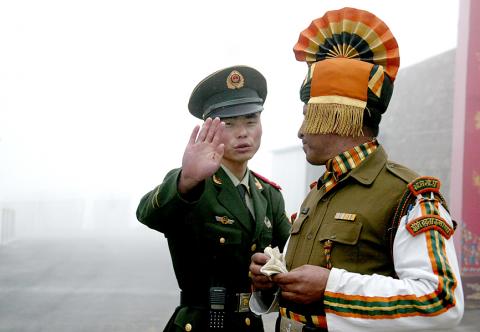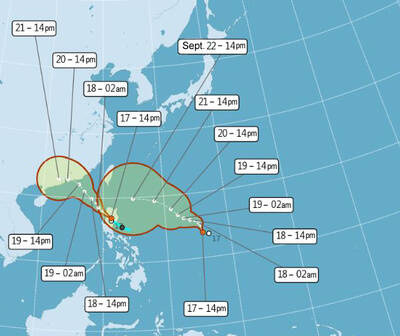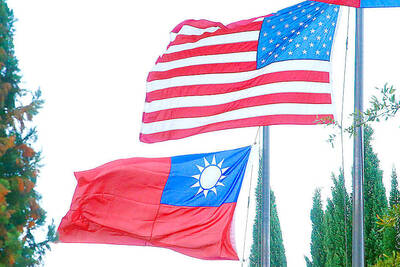China has stepped up its rhetoric in an increasingly tense border row with India, hinting at the possibility of military action in a propaganda push that analysts are calling “genuinely troubling.”
For more than a month, Indian and Chinese troops have been locked in a standoff on a remote, but strategically important Himalayan plateau near where Tibet, India and Bhutan meet.
On Thursday, Chinese Ministry of Defense spokesman Ren Guoqiang (任國強) said that Beijing had shown restraint, but had a “bottom line.”

Photo: AFP
“No country should underestimate the Chinese forces’ ... resolve and willpower to defend national sovereignty,” Ren said in a post on the ministry’s Web site.
It is a line that has been echoed almost word for word this week by the Chinese Ministry of Foreign Affairs, the Xinhua news agency, the Chinese Communist Party mouthpiece the People’s Daily, the official military news Web site of the Chinese armed forces and other outlets.
On Wednesday, the foreign ministry released a 15-page document of “facts” about the border dispute, which included a map of alleged intrusions and photographs of what it stated were Indian troops and military vehicles on China’s side of the border.
Calling for the “immediate and unconditional” withdrawal of Indian troops, it said that Beijing would “take all necessary measures” to safeguard its interests.
Chinese Ministry of Foreign Affairs spokesman Geng Shuang (耿爽) on Thursday said that India was building roads, hoarding supplies and deploying a large number of troops in the area.
“This is by no means for peace,” Geng said.
Mistrust between the two sides goes back centuries and they fought a brief war in 1962 in India’s Arunachal Pradesh.
The recent escalation of China’s rhetoric was “genuinely troubling,” said Rory Medcalf, head of Australian National University’s National Security College. “It suggests that diplomatic conversations, including among high-level national security advisers, are failing to find a face-saving way for the two powers to withdraw their forces.”
The plateau is strategically significant, as it gives China access to the so-called “chicken’s neck” — a thin strip of land connecting India’s northeastern states with the rest of the country.

Taiwan is projected to lose a working-age population of about 6.67 million people in two waves of retirement in the coming years, as the nation confronts accelerating demographic decline and a shortage of younger workers to take their place, the Ministry of the Interior said. Taiwan experienced its largest baby boom between 1958 and 1966, when the population grew by 3.78 million, followed by a second surge of 2.89 million between 1976 and 1982, ministry data showed. In 2023, the first of those baby boom generations — those born in the late 1950s and early 1960s — began to enter retirement, triggering

ECONOMIC BOOST: Should the more than 23 million people eligible for the NT$10,000 handouts spend them the same way as in 2023, GDP could rise 0.5 percent, an official said Universal cash handouts of NT$10,000 (US$330) are to be disbursed late next month at the earliest — including to permanent residents and foreign residents married to Taiwanese — pending legislative approval, the Ministry of Finance said yesterday. The Executive Yuan yesterday approved the Special Act for Strengthening Economic, Social and National Security Resilience in Response to International Circumstances (因應國際情勢強化經濟社會及民生國安韌性特別條例). The NT$550 billion special budget includes NT$236 billion for the cash handouts, plus an additional NT$20 billion set aside as reserve funds, expected to be used to support industries. Handouts might begin one month after the bill is promulgated and would be completed within

One of two tropical depressions that formed off Taiwan yesterday morning could turn into a moderate typhoon by the weekend, the Central Weather Administration (CWA) said yesterday. Tropical Depression No. 21 formed at 8am about 1,850km off the southeast coast, CWA forecaster Lee Meng-hsuan (李孟軒) said. The weather system is expected to move northwest as it builds momentum, possibly intensifying this weekend into a typhoon, which would be called Mitag, Lee said. The radius of the storm is expected to reach almost 200km, she said. It is forecast to approach the southeast of Taiwan on Monday next week and pass through the Bashi Channel

NO CHANGE: The TRA makes clear that the US does not consider the status of Taiwan to have been determined by WWII-era documents, a former AIT deputy director said The American Institute in Taiwan’s (AIT) comments that World War-II era documents do not determine Taiwan’s political status accurately conveyed the US’ stance, the US Department of State said. An AIT spokesperson on Saturday said that a Chinese official mischaracterized World War II-era documents as stating that Taiwan was ceded to the China. The remarks from the US’ de facto embassy in Taiwan drew criticism from the Ma Ying-jeou Foundation, whose director said the comments put Taiwan in danger. The Chinese-language United Daily News yesterday reported that a US State Department spokesperson confirmed the AIT’s position. They added that the US would continue to